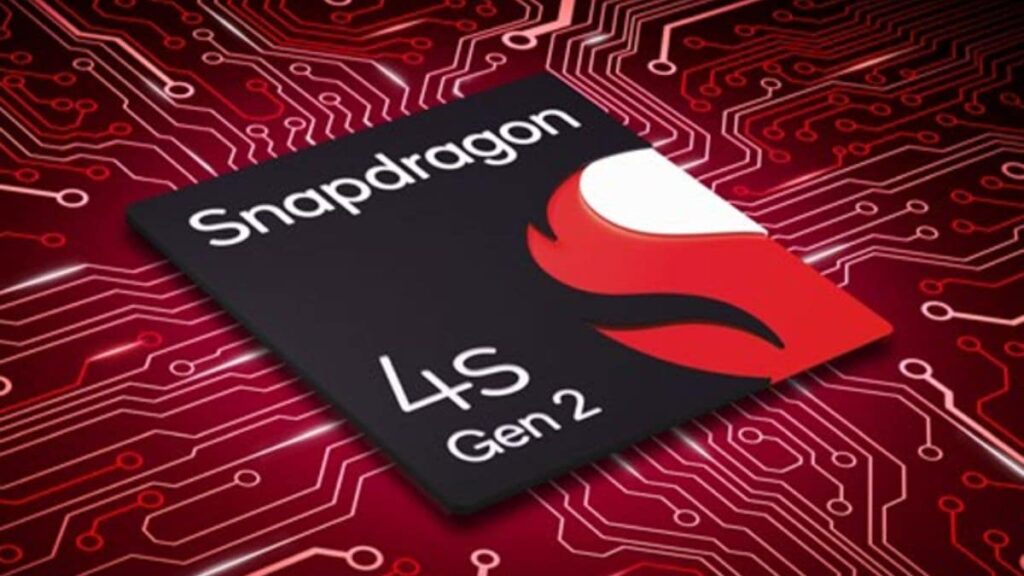Qualcomm Unveils Snapdragon 4s Gen 2 Chipset for Budget 5G Smartphones in India
Qualcomm Unveils Snapdragon 4s Gen 2 SoC: A Leap Toward Affordable 5G in India
Qualcomm has announced its latest entry-level mobile chipset, the Snapdragon 4s Gen 2, at the Snapdragon for India event. This new System on Chip (SoC) aims to democratize access to 5G technology in India, offering a path for affordable 5G smartphones priced around $99 (approximately Rs. 8,200). With its debut, Xiaomi has confirmed it will be the first original equipment manufacturer (OEM) to launch a smartphone powered by this SoC in the country by the end of the year.

Targeting Affordable 5G
The Snapdragon 4s Gen 2 is positioned below the Snapdragon 4 Gen 2 in Qualcomm’s chipset hierarchy, focusing on the entry-level smartphone segment. This strategic move by Qualcomm is aimed at making Gigabit 5G “more attainable” through its integrated 5G Modem-RF System.
The SoC supports standalone (SA) 5G networks, which operate independently of 4G networks, a feature particularly relevant in India where Reliance Jio is currently the only telecommunications provider offering SA 5G connectivity. This capability is crucial for enhancing 5G adoption in a market that is rapidly transitioning towards next-generation network technologies.
Technical Specifications
Built on a 64-bit architecture, the Snapdragon 4s Gen 2 features a Qualcomm Kryo CPU with eight cores: two performance cores clocked at 2.0 GHz and six efficiency cores running at 1.8 GHz. This setup is designed to balance performance and power efficiency, a key consideration for entry-level devices. The chipset also includes an Adreno GPU that supports OpenGL ES 3.2, Vulkan 1.1, and OpenCL 2.0 APIs, ensuring decent graphical performance for everyday tasks and casual gaming.
Manufactured using a 4-nanometre process, the Snapdragon 4s Gen 2 is optimized for power efficiency, which is critical for smartphones with smaller batteries typical of the entry-level segment. The chipset supports LPDDR4x RAM clocked at up to 2133 MHz and UFS 3.1 onboard storage, providing a responsive and smooth user experience.
Camera and Display Capabilities
The 12-bit Spectra Image Signal Processor (ISP) onboard can handle up to 84-megapixel single camera sensors, with features such as electronic image stabilization (EIS) and Multi Frame Noise Reduction (MFNR) enhancing photo quality. This makes the SoC suitable for devices aiming to offer competitive camera performance at a lower price point. The chipset also supports full-HD+ displays with a refresh rate of up to 90Hz, providing a fluid visual experience, and can playback videos at a maximum resolution of 1080p at 60 frames per second (fps).
Audio and Connectivity Features
For audio, the Snapdragon 4s Gen 2 includes Qualcomm aptX Adaptive Audio technology, which supports high-quality 96kHz music streaming. This feature enhances the multimedia experience on entry-level smartphones, making them more appealing to users who value good audio quality.
In terms of connectivity, the SoC is equipped with a USB Type-C 3.2 Gen 1 interface and Quick Charge 4+ technology, which enables faster charging and data transfer. The chipset also integrates Qualcomm’s Location Suite, which supports various navigational systems including GPS, QZSS, Galileo, Beidou, GLONASS, and India’s NavIC, offering lane and sidewalk-level accuracy. Bluetooth 5.1 and Wi-Fi 5 support are also included, ensuring robust wireless connectivity options.
Conclusion
With the Snapdragon 4s Gen 2, Qualcomm is not just providing a pathway for affordable 5G smartphones, but also enhancing the overall entry-level smartphone experience with improved performance, camera capabilities, and connectivity features. As Xiaomi gears up to be the first OEM to launch a handset with this SoC, the Indian market can expect a wave of cost-effective 5G devices that do not compromise on essential features. This move is likely to accelerate the adoption of 5G technology across a broader demographic, paving the way for more inclusive digital access in the region.